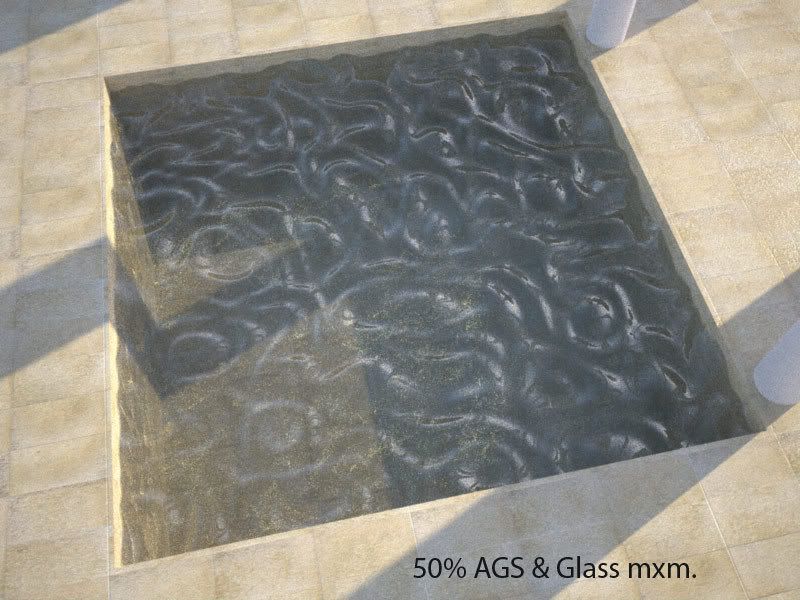Page 1 of 1
WATERjek-shadows-caustics-ior deformation
Posted: Wed Sep 19, 2007 1:02 pm
by rosariogigliotta
Posted: Wed Sep 19, 2007 1:18 pm
by beatriz
Looks very interesting!
could you explain it to us a bit, please?
thanks a lot
Posted: Wed Sep 19, 2007 3:12 pm
by mmhnemo
He posted 2 screenshots describing the material setup.
Basically a water body, bluish/aqua colors with ND1,333 being the main weighted part of the material.
And secondly a bumpy part, white reflections with ND 1 weighted at only 10%
Both material layers have high attenuation distances - clear poolwater so to say.
The result looks quite nice indeed.
Posted: Wed Sep 19, 2007 3:14 pm
by Maximus3D
That's looking real good!

nice work.
/ Max
Posted: Wed Sep 19, 2007 3:26 pm
by simmsimaging
Basically a water body, bluish/aqua colors with ND1,333 being the main weighted part of the material.
And secondly a bumpy part, white reflections with ND 1 weighted at only 10%
I'm confused though: shouldn't the part that's ND=1 just be a ghost material? There must be some opacity in the transmittance colour right? It can't be doing anything for the caustics otherwise, or am I missing something?
b
Posted: Wed Sep 19, 2007 5:28 pm
by rosariogigliotta
.....material not physically corrected..... fake water caustics & ior distortions.....
Posted: Wed Sep 19, 2007 6:02 pm
by Tim Ellis
I've run some tests quickly.
This won't work for a bump map, the water mesh needs to be displaced geometry.
Test one:- mxm as described in the thread

Test two:- mxm 50% AGS & Glass

50% AGS & Glass solves faster than fake ior/caustics method, also has improved shadows and clearer water.
Tim.
Posted: Wed Sep 19, 2007 6:07 pm
by Fernando Tella
What I see is plain water material (100%) + ghost material (10% in additive); bump is modelled as you can see at the edge of the water material.
Edit: I was talking about jek's method.

